|
John Tyman's Cultures in Context Series Torembi and the Sepik A Study of Village Life in New Guinea |
|
Topic No. 25: 24 Hours in the Life of a New Guinea Woman ~ Photos 517 - 600 |
|
|
|
John Tyman's Cultures in Context Series Torembi and the Sepik A Study of Village Life in New Guinea |
|
Topic No. 25: 24 Hours in the Life of a New Guinea Woman ~ Photos 517 - 600 |
|
|
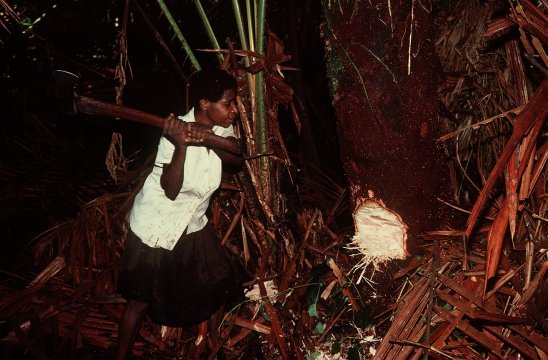 |
| 554. She had to clear away the brush at the base of the palm, so she could swing her axe freely, but she soon got stuck into the tree. It was half a metre in diameter but she cut through it quickly. |
.
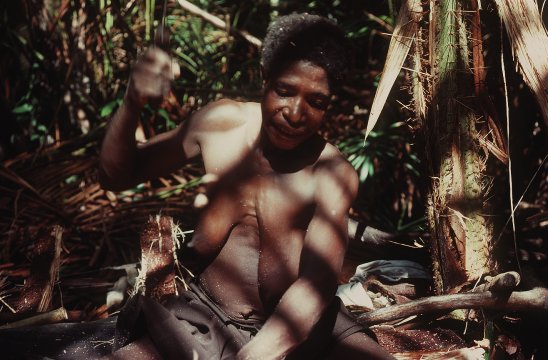 |
| 559. Pausing long enough only to change tools and accept a further word of advice, Antonia now used a machete to chop up the fibres into yet smaller fragments. |
.
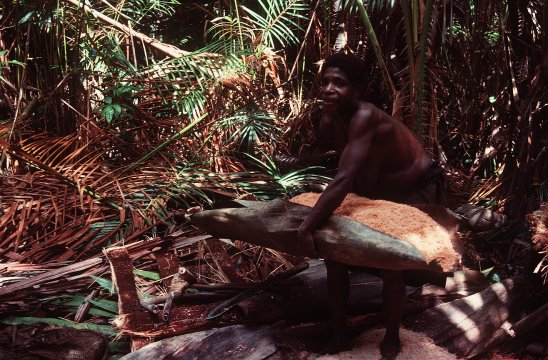 |
| 561. After Antonia had been scraping for an hour, the large leaf she’d been using as a container was piled high with fibres choked with powdered sago: and it was time to carry these away for washing. |
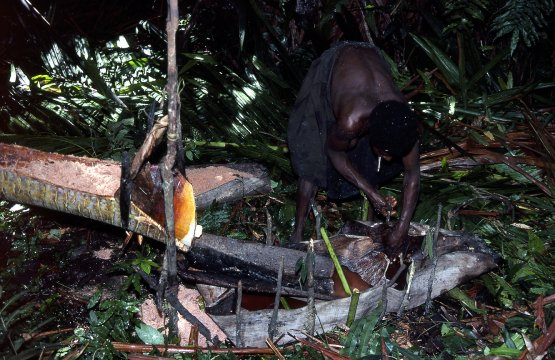 |
| 562. She’d built most of the washing platform the day before and now added the finishing touches to the set of three sediment traps beneath the stand. |
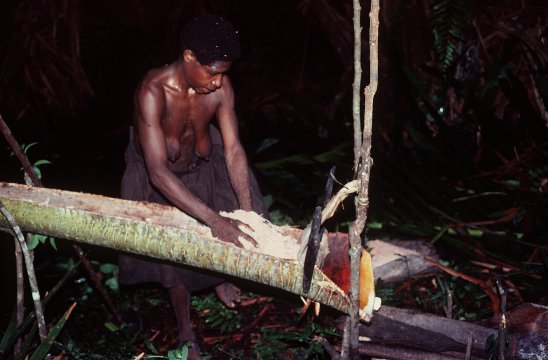 |
| 563. She first dumped a load of fibres into the gently sloping trough, and then added water using a wooden ladle. |
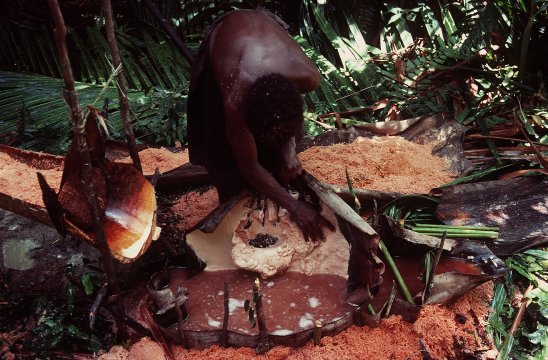 |
| 566. Periodically Antonia would remove each of the upper trays and dump their individual deposits of sago into the deeper basin beneath. |
![]()

![]()
Back to
Cultures in Context Intro: Photos & Recordings
![]()
Text, photos and recordings
by John Tyman
Intended for Educational Use
Only.
Copyright Pitt Rivers Museum,
Oxford University, 2010.
Contact Dr.
John Tyman for more information regarding licensing.
![]()
Photo processing, Web page layout,
formatting, and complementary research by
William Hillman ~ Brandon, Manitoba
~ Canada
www.hillmanweb.com